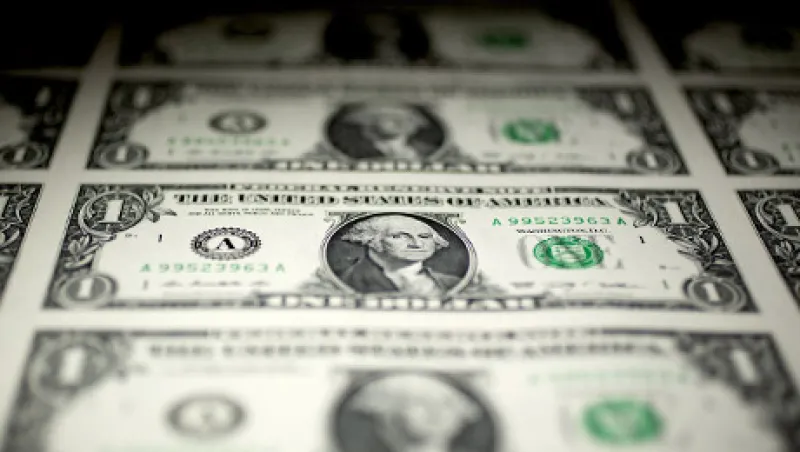U.S. economic strength coupled with European economic weakness is likely to push the U.S. dollar higher against the euro during the next six months, say forex traders. But the dollar doesn’t have quite so much room to appreciate against the British pound because of the buoyant performance of the U.K. economy.
The U.S. economy is on pace to expand by nearly 3 percent during 2014, whereas the euro zone will be lucky to grow 1 percent and more likely will come in around 0.5 percent, says David Gilmore, a partner and economist at Foreign Exchange Analytics in Essex, Connecticut. He thinks the euro can fall to $1.25 in the next six months. It traded at $1.3486 on January 31. “People are looking at better numbers in the U.S., and the Federal Reserve’s tapering [of its quantitative easing] will be ongoing,” Gilmore says. The European Central Bank, meanwhile, “probably has to ease more.”
Expectations are that the Fed will continue cutting its bond purchases by $10 billion at each meeting, meaning it will finish its quantitative easing before the end of the year. “If you view quantitative easing as some form of currency debasement — and if you end that process — you should also end a headwind for the dollar,” says Bob Lynch, a currency strategist at HSBC Holdings in New York. He sees the euro at $1.33 as of June 30.
To be sure, many experts called for a dollar rally last year, and it didn’t happen. If investor demand is strong enough for Europe’s high-yielding debt, U.S. growth turns out to be disappointing or European growth outpaces expectations, the dollar might not rally.
Yet most analysts believe this time will be different. A sluggish economy should keep the ECB in easing mode much longer than the Fed, they say. “Outside of Germany, the bloc is in a state of stagnation or contraction,” says Omer Esiner, chief market analyst at forex brokerage Commonwealth Foreign Exchange in Washington. “That’s likely to keep the ECB accommodative. It has left the door open to further cuts.”
Inflation plays a big role in the euro-versus-dollar picture as well, says David Woo, head of global rates and currencies research for Bank of America Merrill Lynch. A major reason why the euro was able to gain against the dollar in 2013, even as unemployment rates in Europe went higher and dropped in the U.S., is that the euro zone and the U.S. each had core inflation of about 1 percent, he says.
“There was inflation convergence. But given the mass divergence in output this year, we think you will see inflation divergence. U.S. inflation will surprise to the upside and euro zone inflation to the downside,” says Woo. “That will force a divergence in the path of monetary policy.” Euro zone inflation totaled only 0.7 percent in the year leading to January, compared with a rise of 1.5 percent in the U.S. consumer price index in 2013. The euro and the dollar will be driven more by inflation expectations than growth expectations this year, Woo says. He anticipates the euro will trade at $1.29 in six months.
As for the ECB, experts say there is a good chance it will cut rates again. Lower rates hurt a currency by making bank deposits denominated in it less attractive. But the ECB’s main refinancing rate only stands at 0.25 percent, so there is not much room to reduce it further. Thus the ECB also might opt for some kind of quantitative easing, such as a lending facility for companies, say Gilmore and Lynch.
When it comes to the Fed, once tapering is nearly finished, markets will begin to anticipate the first increase in rates by the central bank, Lynch says. The Fed has so far guided markets not to expect the first rate hike before mid-2015. “But it’s not hard to envision a scenario of increased risk for an earlier tightening,” Lynch says.
Another important driver for the dollar against the euro is investment flows. One reason for the euro’s strength in 2013 was that investors who were underweight European assets were buying them, Woo says. But that has now run its course, he says. “European assets are now looking expensive. Stocks are the most expensive against the U.S. in the past ten years based on forward earnings yields. And our fund managers’ survey shows that 43 percent of investors say they’re now overweight European equities.” All this is supportive for the dollar against the euro, Woo says.
The emerging-markets turmoil also is supportive for the dollar because European nations, especially Germany, have much more exposure to emerging markets than does the U.S., Woo says. The dollar has some room to rise against the pound over the next six months. But “the pound’s downside is more limited based on the fact that the U.K. economy is outperforming the euro zone quite significantly,” Esiner says.
The U.K. economy expanded by 1.9 percent last year while that of the euro zone contracted by 0.4 percent in the third quarter from a year earlier. The U.K. unemployment rate fell to 7.1 percent in the three months through November, almost reaching the 7 percent threshold that the Bank of England had set for considering a rate hike. Governor Mark Carney said in late January that the central bank would not automatically change monetary policy once unemployment breaches the threshold because of low inflation and other headwinds to growth.
The U.K. faces a large trade deficit, and HSBC economists expect weak wage growth to dampen consumption, Lynch says. He anticipates the pound falling to $1.61 by June 30 from $1.63 on February 5.







